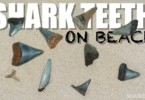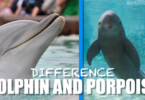Sharks are apex predators of the ocean and to capture and eat their prey, it is evident that they have loads of sharp teeth. But are you aware that there are some species of sharks that do not have teeth? Surprised? Let us make you familiar with those sharks.
Do Sharks Have Teeth?
Yes, Sharks, unlike humans, are born with teeth. They develop in rows like conveyor belts, with the largest teeth facing outwards. The smaller teeth at the back keep moving up and finally replace the front ones over time. The whale shark has 3,000 teeth in its mouth, while most sharks have 5-15 rows.
How Many Teeth Does A Shark Have?
One aspect of sharks that fascinates everyone is their powerful, enormous, and monstrous teeth. Sharks typically have 50 to 300 teeth at any given moment, though this varies by species. Sharks normally have 20,000 to 35,000 teeth, but can have up to 50,000 teeth.
How Many Different Kinds Of Sharks Have No Teeth?
There are a few species of sharks which does not have teeth, while other have teeth but are of no use at all. There is a total of four shark species having no teeth.
1: Basking Shark
Scientific name: Cetorhinus maximus
The basking shark is considered the second-largest fish in the ocean world, growing to an average length of 9 meters! These gentle giants are filter feeders who gorge themselves on plankton and jellyfish. They have an oily liver that is rich in nutrients and serves as a critical source of energy. Most of their food is taken passively through filtering water as they swim by at 5 knots per hour! The basking shark feeds on filter algae.

2: Nurse Shark
Scientific name: Ginglymostoma cirratum
This sluggish creature can grow to be up to 4 meters long and is mostly found in the warm coastal seas of North America and the Caribbean. Its gills feature a respiratory lining that allows it to take oxygen from the ocean directly. To ingest soft-bodied prey such as mussels, mollusks, crabs, and tiny fish, their teeth are fused together. They swallow their meal whole, and it is then carefully moved through their digestive tract to avoid obstructions that could arise if it was ingested too quickly.

3: Whale Shark
Scientific name: Rhincodon typus
It’s not that whale sharks lack teeth. They have quite a few numbers of teeth that they use to filter rather than chew. Whale sharks don’t need strong teeth because they eat plankton and fish eggs in the water. Furthermore, because they must filter a huge volume of water in order to absorb nutrients, they have up to 3000 small non-functional teeth.

4: Megamouth Shark
Scientific name: Megachasma pelagios
Megamouth sharks can be found all across the world, from Japan to Africa. To begin with, this shark does not have many teeth, and they are not as sharp or jagged as those of its relatives. They have a big mouth, and so is the name, they look like a frogfish and have no visible nose! It feeds on plankton, jellyfish, and small fish near the ocean’s surface. The megamouth shark feeds on filter algae.

The Final Word
Basking sharks, whale sharks, nurse sharks, and megamouth sharks are considered no-teeth sharks as they do not use their teeth for eating or any other purposes. These sharks do not pose any threat and are considered harmless toward humans and are considered safe to swim with. However, they are still sharks, so it’s better not to agitate them, or else they can put on a show of their power.







